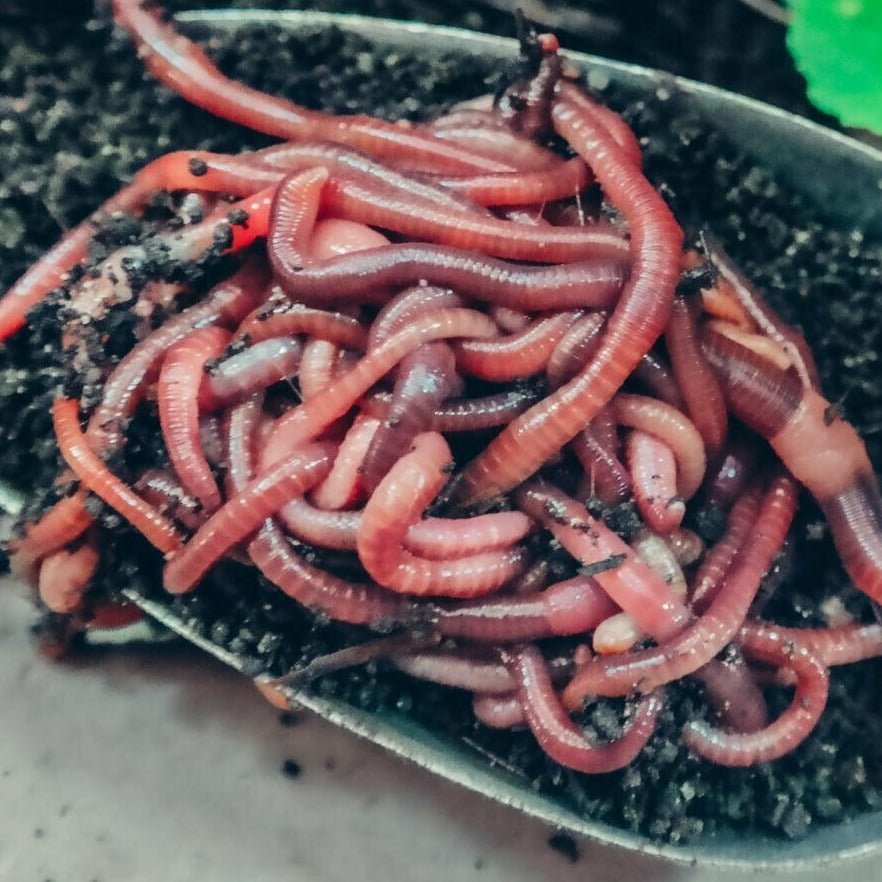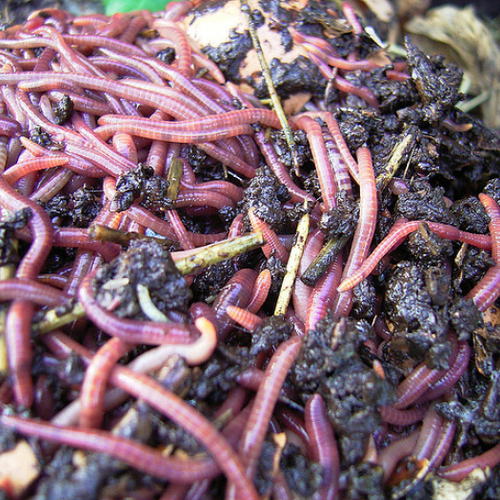The Role of Red Wigglers in Sustainable Horticulture
The assimilation of red wigglers into sustainable horticulture methods provides an engaging strategy to improving soil wellness and minimizing organic waste. These microorganisms not only convert cooking area scraps into nutrient-dense garden compost with vermicomposting but additionally aerate the dirt, promoting optimal problems for plant growth. As they damage down complex natural products, they proactively foster a growing microbial ecological community necessary for sustainable farming. However, the effects of using red wigglers expand beyond plain composting; their role fit a more lasting future warrants a deeper expedition of their advantages and useful applications.
Understanding Red Wigglers
Red wigglers, clinically referred to as Eisenia fetida, are a varieties of earthworm renowned for their role in sustainable gardening and composting methods - red wigglers. These worms prosper in decaying organic matter, making them particularly efficient in transforming cooking area scraps and backyard waste right into nutrient-rich garden compost. Unlike traditional earthworms, red wigglers have a higher tolerance for varying wetness levels and can grow in atmospheres with bountiful natural product
The habitat choices of red wigglers include damp, dark environments abundant in organic web content, such as compost containers or worm farms. Their eco-friendly role prolongs past composting; they are essential in freshening the soil and assisting in nutrient cycling, which inevitably contributes to healthier yard communities. red wigglers. Recognizing the biology and actions of red wigglers is vital for those looking for to implement efficient vermicomposting in lasting horticulture
Benefits of Vermicomposting
Vermicomposting offers many benefits that enhance sustainable horticulture techniques and add to environmental health and wellness. Among the key benefits is the change of natural waste right into nutrient-rich garden compost, which boosts soil structure and fertility. The castings created by red wigglers are loaded with beneficial microorganisms and necessary nutrients, making them a superb natural plant food.
In addition, vermicomposting considerably decreases garbage dump waste. By drawing away kitchen area scraps and backyard waste from land fills, this technique not just decreases methane exhausts-- a powerful greenhouse gas-- but also advertises a round economy, where waste is repurposed as a resource.
Another benefit is the improvement of dirt oygenation and water drainage (red wigglers). The burrowing task of red wigglers produces networks in the soil, enabling air and water to penetrate more easily, thus cultivating a much healthier origin system for plants
Additionally, vermicomposting can be done on a little scale, making it available for urban gardeners and those with minimal room. This approach motivates environmental stewardship and awareness, as individuals come to be extra engaged with their waste management practices. Inevitably, vermicomposting stands for a sustainable, efficient, and eco-friendly approach to horticulture that benefits both plants and the planet.
Just How to Begin Vermicomposting
Starting your very own vermicomposting system can be a fulfilling venture that enhances your lasting gardening practices. To start, choose a suitable container, such as a plastic container or wood box, with good water drainage and ventilation. The size will depend on the quantity of kitchen area scraps you create; a container of 10-14 gallons usually suffices for a house.
Next, prepare the bed linens material. Shredded paper, cardboard, and coconut coir are exceptional options, giving a comfortable environment for the red wigglers. Go for a bed linens depth of concerning 4-6 inches, which ought to be wet however not soaked.
Once the bed linens is established, present your worms. Red wigglers (Eisenia fetida) are the most appropriate for composting. Beginning with roughly one extra pound of worms for every 2-3 extra pounds of cooking area scraps weekly.
Begin adding cooking area waste, avoiding meat, dairy products, and oily foods, as these can bring in insects and produce smells. Frequently monitor the container's dampness levels and temperature, guaranteeing it remains within the optimal array for worm activity. With these initial steps, you'll be well on your means to creating nutrient-rich compost for your garden.
Keeping a Healthy And Balanced Worm Bin
A prospering worm container calls for consistent care and interest to keep an optimal environment for the red wigglers. Secret aspects to check consist of moisture levels, temperature, and food supply. Preserving a wetness degree comparable to a wrung-out sponge is essential; as well much water can cause anaerobic problems, while insufficient can dry out the worms.
Temperature level is additionally critical, as why not look here red wigglers flourish in a series of 55 to 77 degrees Fahrenheit. Extreme temperatures can worry the worms, potentially causing death. Placing the container in a climate-controlled location or making use of shielding products can assist regulate temperature level variations.

Finally, oygenation is crucial. Frequently turning the bed linens and using a fork or shovel can protect against compaction and promote airflow, making sure a healthy, growing atmosphere for the red wigglers. By sticking to these methods, gardeners can preserve a productive worm bin that sustains sustainable horticulture efforts.
Effect On Soil Health And Wellness
Enhancing soil health and wellness via the usage of red wigglers is a fundamental element of lasting horticulture. By consuming organic matter, red wigglers damage down intricate materials into easier substances, a procedure recognized as vermicomposting.


Final Thought
In conclusion, red wigglers significantly add to sustainable horticulture with their effective vermicomposting techniques. By promoting waste decrease and promoting a circular economic situation, red wigglers emerge as essential parts in environmentally friendly horticulture efforts, underscoring their crucial role in ecological sustainability.
Comments on “Eco-conscious red worms: Easy care tips”